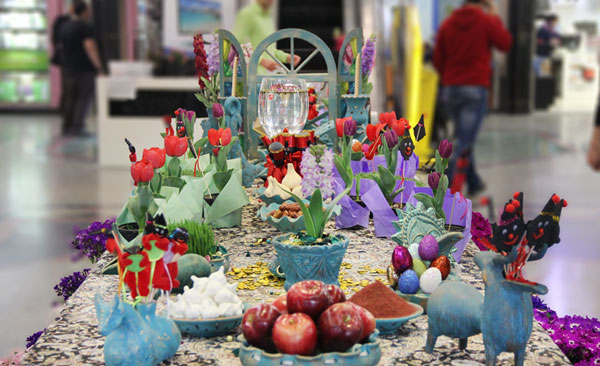Norooz
Norooz (also written as Nowruz) is one of the most ancient traditions in the history of humankind. Celebrated by a great number of people in different parts of the world, Norooz marks the first day of the Spring, standing as a symbol of the rebirth of our Blue Planet and all life on Earth. It is also the first day of Farvardin (the first month in the Iranian calendar).

Proclaimed by the United Nations General Assembly as the International Day of Nowruz (March 21), this day is the official beginning of a new year in more than 10 countries. According to the UN, this joyous occasion has been celebrated for over 3000 years. Norooz is a time of festivities, with numerous gatherings amongst family members, relatives and friends. People go door to door, visiting their loved ones and wishing them a happy and prosperous new year.
Of the most important themes and values of Norooz, we can mention friendship, hospitality and cultural awareness, as well as peace and reconciliation amongst families and between generations.
Probably the most distinguished symbol of Norooz is Haft-Seen. Haft-Seen, observed in Norooz, is a traditional table setting, which consists of seven (Haft, as the number 7 in Persian) items which name all start with Seen (س, the 15th letter in the Persian alphabet). Traditionally, according to Wikipedia, these items are:
· “Sabzeh (wheat, barley, mung bean or lentil sprouts growing in a dish - symbolizing rebirth)
· Samanu (sweet pudding made from wheat germ - symbolizing affluence)
· Senjed (dried oleaster Wild Olive fruit - symbolizing love)
· Sir (garlic - symbolizing medicine)
· Sib (apples - symbolizing beauty and health)
· Somāq (sumac fruit - symbolizing (the color of) sunrise)
· Serkeh (vinegar - symbolizing old-age and patience)”
For more information, go to the links below:
http://en.wikipedia.org/wiki/Nowruz
http://en.wikipedia.org/wiki/Haft-Seen
Some families have a tradition to substitute one of the items above with Sekeh (coin - also symbolizing affluence).
There are several delightful common practices observed during Norooz, including visiting family and friends, giving presents, especially to younger members of the family, traveling, and picnics in the nature.
In Iran, the first five days of the year, that is Norooz and four days after it, are official holidays. Festivities of the New Year come to an end on the 13th day of Farvardin (known as the Nature Day in the Iranian calendar), which is called Sizdah Be-dar. On this day, people go to the countryside and mostly have a day-long picnic, cheerfully ending Nowruz and beginning a whole new year. The celebrations may be over after Sizdah Be-dar, though you can certainly feel an atmosphere of jubilation surrounding each and every man, woman and child.
We here at TUMS wish everyone a happy New Year. May you accomplish your goals, realize your dreams and reach every single wish you have this year.